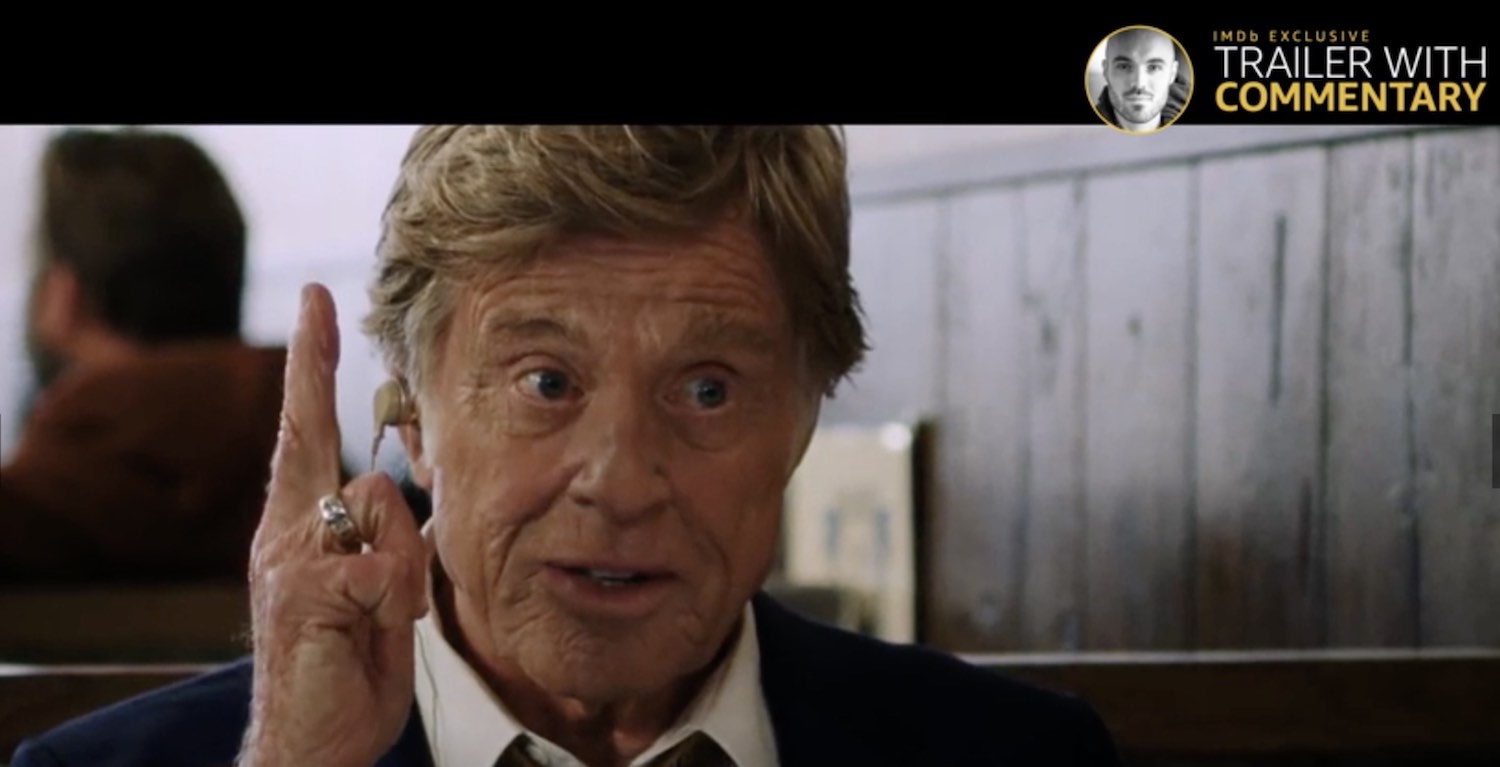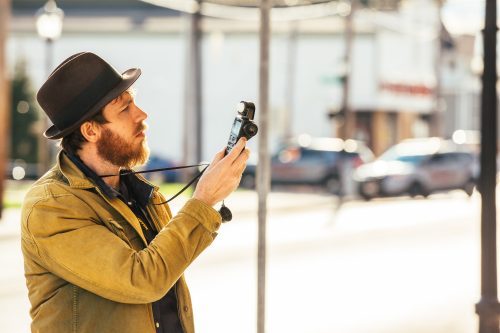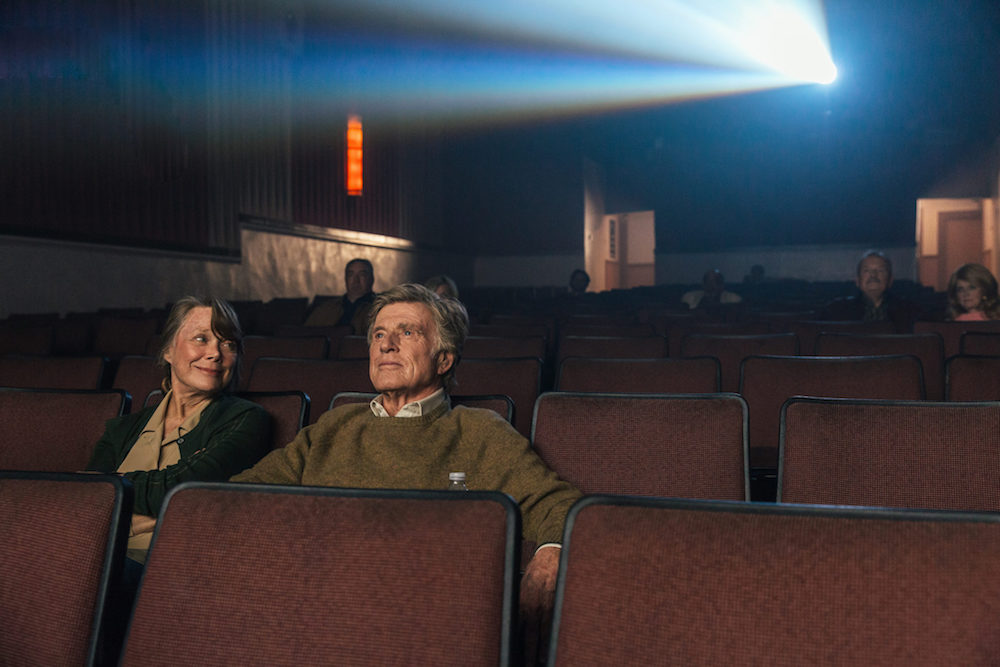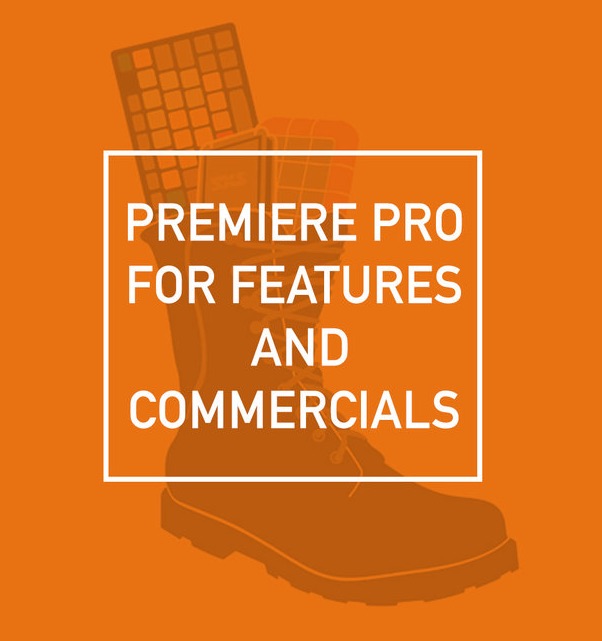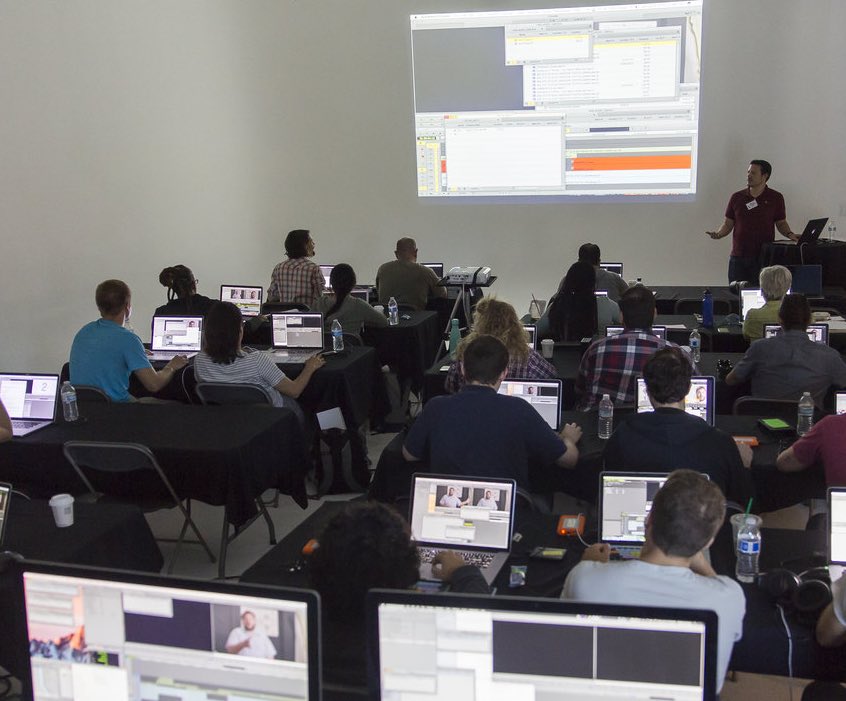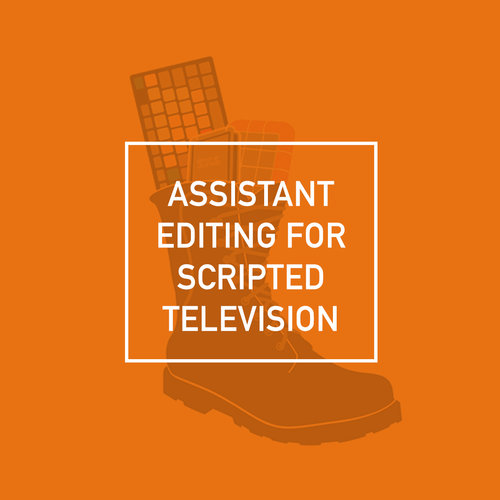The Making of The Old Man and The Gun
From the moment I saw the trailer for The Old Man and The Gun, written and directed by David Lowery, I fell in love with the film.
What’s not to love? Robert Redford, in his (purportedly) final on-screen role, Casey Affleck, Sissy Spacek and a great looking supporting cast. Plus plenty of bank robberies and old men with serious charm*.
And now I discover that it’s also been edited in my day-to-day editing application of choice, Adobe Premiere Pro. Cue a making of post which I’ll be updating over time.
*Speaking of old men with serious charm, I’m amazed and delighted that Clint Eastwood is still directing and staring in his own movies.
You can hear David Lowery give a rapid fire commentary to the trailer on IMDB.com, which doesn’t give a lot away, except for a few filming locations and his love of several character actors and the movie Two-Lane Black Top.
David Lowery also edited his previous film, A Ghost Story in Premiere Pro which you can read about here. If you’re an Amazon Prime member you can watch it for free right now!
If you’re interested in editing a feature film in Adobe Premiere Pro you should definitely take the time to read these detailed articles on doing so:
- Inside Mindhunter’s Post Production
- Editing Feature Films in Premiere Pro
- The Making of Gone Girl
- Cutting Deadpool and Hail! Caesar in Premiere Pro
David Lowery and Casey Affleck are interviewed for Collider on a wide range of topics including the making of The Old Man and The Gun.
Here is a snippet of just some of the topics covered:
- Shooting The Old Man & The Gun on 16mm and the challenges that presented
- How many takes both Affleck and Lowery prefer to do on each scene
- How much they rely on storyboards
- How much Affleck wants to see cuts during the editing process
- What they learned from early screenings that impacted the finished film
- What day each of them will always remember from making The Old Man & The Gun
In this interview with director David Lowery from IndieWire’s Filmmaker Toolkit, you can learn more about the film’s production and the fact that screenwriting legend William Goldman, had originally taken a crack at the idea behind the film.
That, and a lot of love for Robert Redford.
Filmmaker Magazine has the only interview I can find with cinematographer Joe Anderson who helped to bring the cinematography (that was detailed even in the script) to the screen.
It’s a really fascinating interview with some great details, plus a nod to two of my favourite Redford movies (All The President’s Men also deserves a mention!).
Filmmaker: If this ends up being Redford’s final performance, it feels like such a fitting way to go out. Do you have a favourite Redford movie? We can take The Old Man the the Gun out of consideration.
Anderson: Well, that is my favourite Robert Redford movie. (laughs) I love Conrad Hall so I’d say that Butch Cassidy and the Sundance Kid is probably my favourite. But I’m also a big fan of Sneakers.
Sneakers actually played a big role in the colour grade. We played with a little bit of a 1990s video tape transfer look for the movie, where it wasn’t super saturated and had slightly lower contrast.
With regards to creating a period look, Anderson had some helpful insights to share on a different way of doing things:
Anderson: When making a period piece, I think to really do it well and transport the audience back in time you have to acknowledge the way movies were made in the period that the story is set in.
Instead of trying to do that with funky old lenses, we used a slower film stock (Kodak 7213 200T) that required a lot more light and then we underexposed it a little bit to give it some more grain. (Shooting at a slower ASA) informed many of the lighting decisions.
It’s a very different approach than everybody’s used to nowadays with super fast digital cameras and super light sensitive lenses. We certainly had to balance those lighting needs with the fairly modest budget of the movie, but for some of the night exterior scenes we used 180,000 watts of light just because the film needed it.
The Old Man and The Gun Original Soundtrack
The entire soundtrack from composer Daniel Hart is online for you to enjoy. It’s a delight! He also composed the music for A Ghost Story.
Editing The Old Man and The Gun in Premiere Pro
Adobe have put together a short video on the film’s use of Premiere (above) in which you can hear a few soundbites from Editor Lisa Zeno Churgin (Gattaca, The Cider House Rules, Pete’s Dragon) and her assistant Mike Melendi on their work on the film, and in this accompanying blog post, which is also worth a read.
With his experience as an editor, David understands how to play with scenes to get the best emotion from the story. He could give very detailed notes about how he wanted me to adjust the footage and try a different take on the scene. – Lisa Zeno Churgin.
Lisa is interviewed by editor Steve Hullfish in this extended conversation about her work on The Old Man and The Gun, which was her first feature film cutting in Adobe Premiere.
Whilst chatting with Steve, Lisa describes the film as ‘a bit more of a character study than anything else. It’s not overly plot-driven.’ which leads to some interesting discussion between the two editors:
HULLFISH: Was one of the challenges just in keeping a six-minute dialogue scene interesting?
CHURGIN: Yes, and the answer is in the pacing.
The structure of the scene basically was similar to my first cut, and it just got cut down. David loved some interesting shots and so there’s one of those that we made longer.
Talking heads scenes are challenging in that it is based on the rhythm of the words that they say and how long you stay on it; who you go to; what reaction shots you use; when you use the reaction shots; how much you cut back.
The goal is always to do as little cutting as possible and let the scene speak for itself, but then there’s always something in the power of a cut. I’m constantly learning that. When you switch something up it’s like, “Oh, that is SO much more effective that way.”
Even at this point in my career, I’m constantly being surprised by the power of a cut: where you do it; how you do it; when you do it.
Steve and Lisa go on to talk about how to edit a scene even if you’ve not had time to watch all the dailies, why Robert Redford’s lack of costume changes created so much narrative flexibility, their mutual love and respect for editor Carol Littleton, cutting without temp and her switch from Avid to Premiere.
The also weaved into an interesting and not often discussed topic of ‘film-doctoring’, which is when another editor is brought onto a project to re-shape the film when it’s deemed ‘not to be working’ with the initial editor.
HULLFISH: You were talking about film doctoring — taking over somebody else’s edit. When you do that, are you starting every scene from scratch again or are you just looking at the problem areas?
CHURGIN: It depends on the project. Some films you have to.
I did a doctor job earlier this year and the approach to one of the characters I felt was totally wrong. I went in and recut a lot of the character-driven scenes. Some of the more action-oriented things I didn’t touch at all. They were really well done. But I really needed to restructure the approach to one of the characters. So for that, I went back to dailies.
There was another where I just really needed to cut it down. That’s just a lack of experience of a younger editor. That’s why editing is a process.
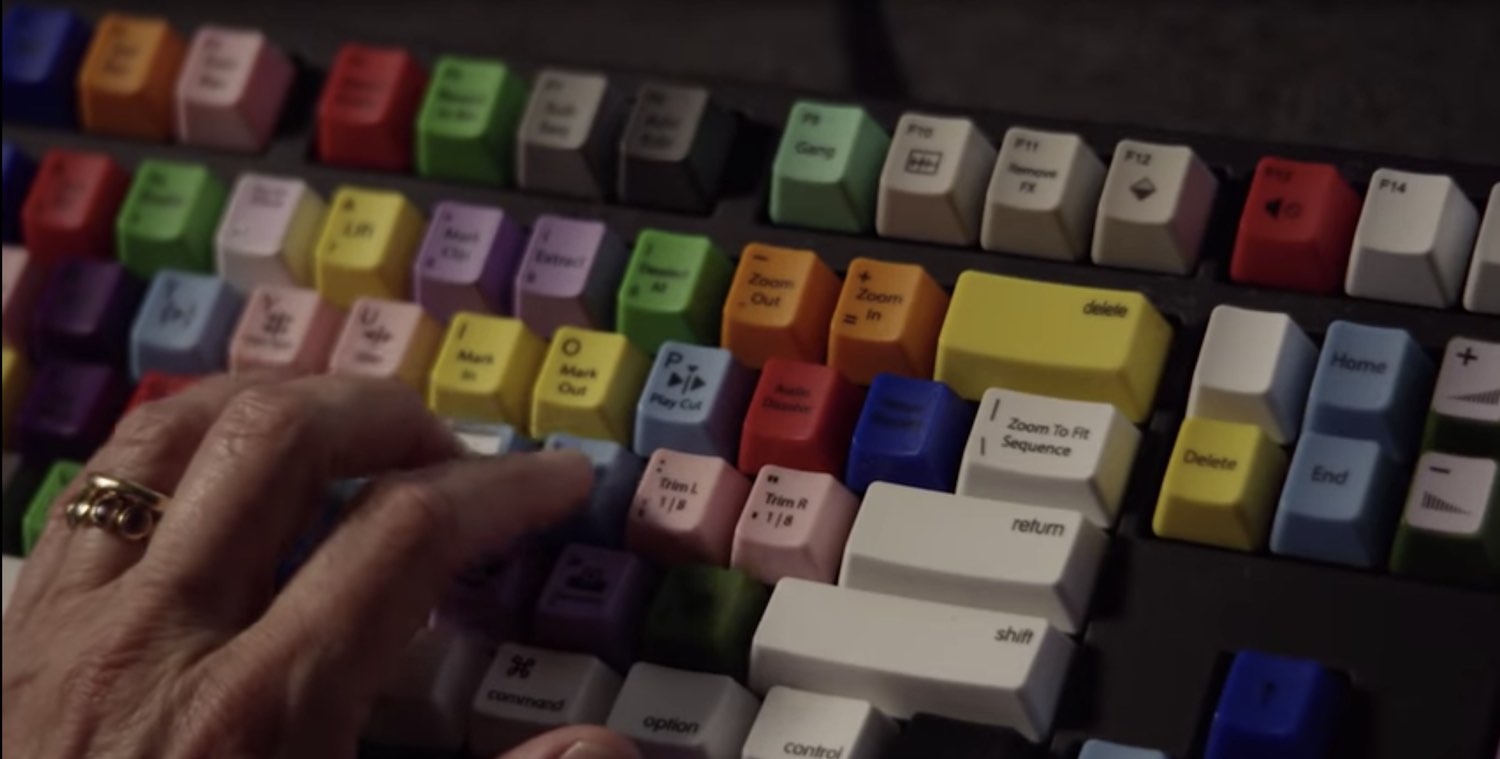
Lisa’s custom keyboard in a screen grab from the Adobe video
Another take away from Steve’s interview with that of WASD Keyboards, who enable you to create custom keyboards to your own specification and design, including custom colours and printing.
In the image above (click to enlarge) you can see a few of Lisa’s own custom buttons and print options for her personal editing set up, synthesising Avid Media Composer and Adobe Premiere Pro shortcuts.
If you are thinking of investing over $150 in a mechanical keyboard you might want to spend a few bucks on this 6 key mechanical switch tester strip, which will give you a sense of what the various types of mechanical switches actually feel like.
I thought this Q+A on the Amazon page was helpful:
Did the keyboard you got after trying this tester match what your tester experience led you to think was the best colour/choice?
I would say this tester was great for getting a very general feel of the switches, but it did not really encapsulate what it was like to use a full keyboard.
That being said, my favourite switch was the Cherry Clear, and I bought a Cherry Clear board and it is amazing. I am glad to have spent the money on the tester, but if you want to get a full experience maybe buy 5 switches of the same type and give that a try.
Steve’s interview with Lisa is part of his on-going (and epic!) series of interviews with many of the world’s top editors. He’s compiled nearly 50 of those interviews into a book called The Art of The Cut, which I’ve previously reviewed here.
Every one of those interviews is available online for free at ProVideoCoalition, but the reason that The Art of The Cut is one of those rare gems, that really is a ‘must read’ if you want to learn more about the craft of film editing, is because of the editing process that went into creating the book.
This is how Steve describes it:
I personally conducted all of the interviews, then I personally transcribed most of the interviews, but it wasn’t until I saw them broken down into topics and edited into context that I realized the power of the book.
Even if you read every interview on PVC, you wouldn’t get the value that the book provides. It’s really eye-opening. – Steve Hullfish
Check out my full review here.
Studio Daily also has a nice interview with Lisa which covers some similar ground but also a few other topics and includes some nice tidbits of insider information, including how they decided which movie to put on the screen when the two main characters go to the cinema.
What do you most enjoy about working with David?
He really, really knows what he’s got when he shoots it. He does like to play and experiment but he remembers everything.
At one point, he wanted to put a shot of Sissy spilling her water at the end of one of the diner scenes. I had to wade through a lot of material to find it but it was the perfect juxtaposition in that moment.
We don’t really need to watch dailies together. My assistant Mike organises the bin for me. Then I go through it all.
I know by the time I finish the movie I will have examined every single piece and every single performance. But when I first approach it I want to get it cut as quickly as possible, because I feel that’s how I can best help the director in terms of seeing what they’ve shot.
More interviews with Lisa Zeno Churgin
Lisa spoke on this panel of editors including Kyle Reiter of Atlanta, and Sofia Subercasseaux from TYREL, about their use of Adobe Premiere and their approach to the craft of film editing in general.
Lisa is also interviewed in this short episode of Craft Truck – In The Cut (an excellent resource) back in 2014.
Editing in Feature Films in Premiere Pro
While we’re talking about editing feature films in Adobe Premiere Pro I thought it was worth re-highlighting a couple of useful presentations from NAB 2018, including this one from Editor Tyler Nelson and Assistant Editor Billy Peake, who part of David Fincher’s editorial team behind the Netflix’s original series Mindhunter.
The two editors share some valuable insights into how they supercharged their post workflow in Adobe Premiere Pro using a new bespoke codebook app called Dispatch, that will be available from PIX at some point in the future.
To learn a lot more about Mindhunter‘s post production process, check out this previous post.
Adobe’s Karl Soule, part of their official ‘Hollywood Workflows’ team, describes how high-end productions use various Adobe products to complete their projects, including being able to hand-off to other apps like Pro Tools, Baselight or DaVinci Resolve.
Karl’s focus is on how best to establish your project workflow at the beginning such that your turnovers go as smoothly as possible at the end.
In-Person Assistant Editor Training
To round out this article I thought I would mention the Los Angeles based Assistant Editor’s Boot Camp, who got in touch with me this week about some of their upcoming classes.
I’ve previously heard of their dedicated in-person training courses, but living in London hadn’t investigated too much further.
The reason I mention them here is that they have now added the option of attending their workshops via Webinar, and at a discounted rate!
So if you’re interested in being taught in-person by experienced editors and assistant editors who are currently working in the industry, and having the opportunity to make connections with other editors and assistants then it might well be worth heading along.
They also occasionally have free courses too, like this one on finding your next assistant editing gig.
UPDATE – September 2019
Assistant Editor’s Boot Camp are running two new classes in October focusing on the skills required to be an assistant editor in reality television.
Now you may not be aspiring to have a life-long career in reality TV (or maybe you do!) but given the amount of content that is produced each year in this genre, these kind of assistant editor positions are likely to be much more accessible.
So in a zig-zag fashion, landing a gig as an assistant editor in reality TV could be the first step to climbing the editorial career ladder.
Check out all the details and sign up on their Eventbrite page. There are two classes on Saturday and Sunday 19th/20th of October 2019, which you can take individually but if you attend both days you can save 10% on the total cost.
There is also a reduced price for ‘attending’ the live-stream.
There are two classes in October which you can attend in person and online. The first is on using Premiere Pro for Features and Commercials, on October 19th.
The outline of the course suggests that you’ll get a strong overview of the technical workflow required to get your project in and out of Premiere, including:
- Setting up and customising Premiere
- Proxy workflows and customising metadata
- Multi-cam workflows
- Dynamic linking across the Adobe product suite
- Preparing turnovers for sound and picture
The class lasts a whole day and costs $199 in person or $175 on the webinar.
Find out more and sign up here.
The second course on October 20th is for those looking to land work as Assistant Editors in Scripted TV, and is taught by assistant editor Ralph John-Pierre who has worked on shows like Lost in Space, CSI: Cyber, Workaholics and others.
The class covers everything you would need to know to work as an assistant editor from setting up editorial on day one through to the final turnovers and wrap on the last day.
This course is far more in-depth and covers handling the detailed paperwork at the heart of the assistant editor role as well as the details of working with Avid Media Composer to support your editor.
Here are the headlines, although you can read through the 33 itemised topics here.
- Pre-Production set up
- Paperwork breakdown
- Production/Editorial
- Dailies
- Temp Music & Sound
- Tracking VFX
- Finishing
The course is more expensive at $350 in person and $325 via webinar, but from the topic list alone, it would give you a solid grounding in everything an Assistant needs to know when working in Scripted TV.
I would say that the huge benefits to in-person training is that you a) get to meet real people in real life and, b) can ask questions and clarify your knowledge as you go along.
I’m not sure if you get to keep a recording of this webinar after the fact, but if you don’t then you’ll want to take very detailed notes, or consider training like that from Master The Workflow, which allows you to learn at your own pace and schedule.

